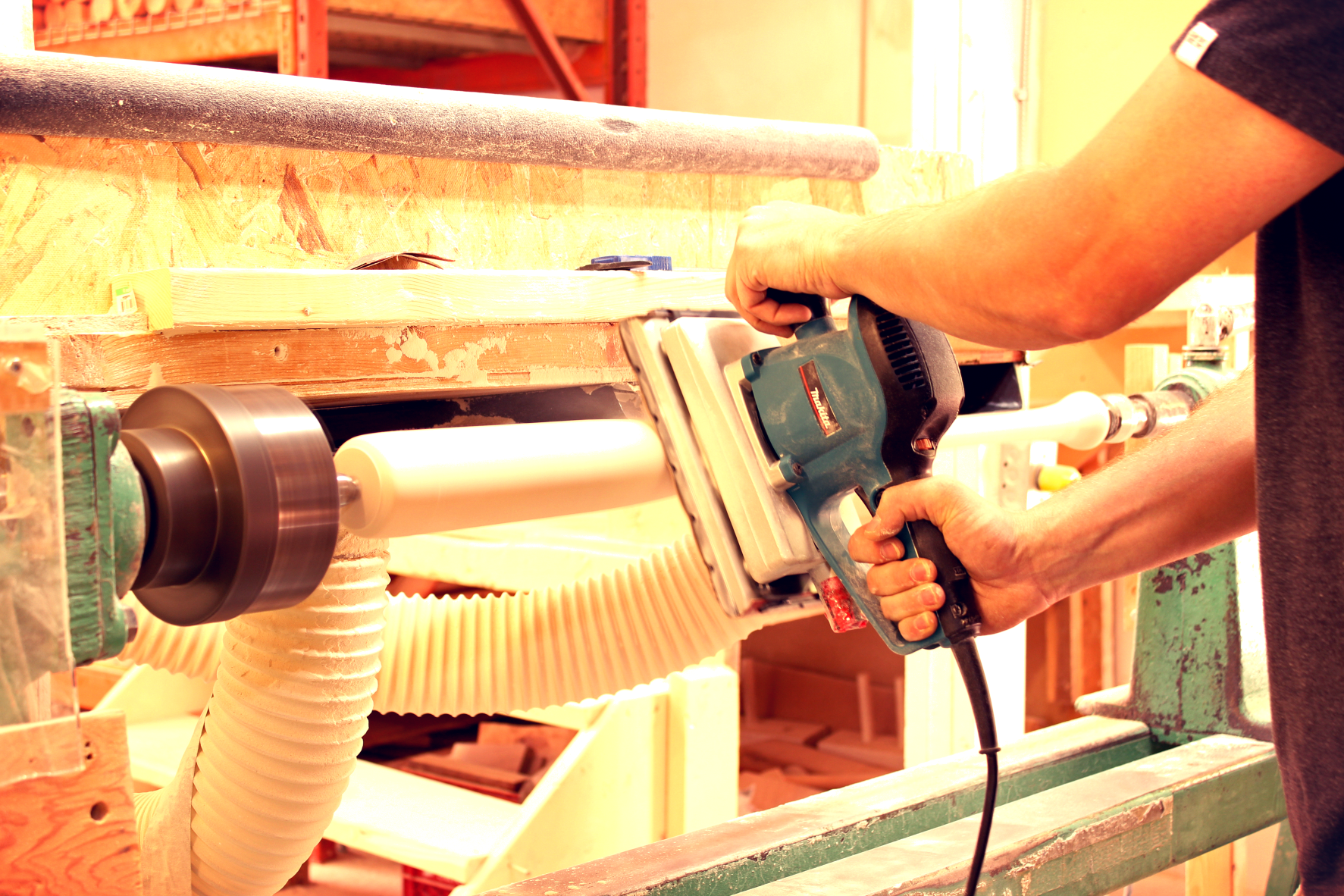HEDDY SOROUR
It’s a busy time of year for wooden baseball bat manufacturers, but since last weekend, it’s gotten a lot busier.
“We’ve noticed a marked difference in the number of Torpedo bats ordered in the last week. Not only is it all anyone wants to talk about, but certainly there’s hundreds of orders for Torpedo bats specifically,” says Kevin Rathwell, sales manager at Sam Bat in Carleton Place.

Sam Bat – Original Maple Bat Corporation – has been inundated with orders and inquiries about the Torpedo bat. The sudden interest seems to have been fuelled by the New York Yankees’ huge win over the Milwaukee Brewers during Major League Baseball’s opening week.
In that game, the Yankees clubbed nine home runs — just one shy of the record set by the Blue Jays in 1987 — and five of those homers were hit by players using the Torpedo bat.
“Since last week, it’s been crazy — social media post increases, Instagram reach-outs, emails, phone calls — every sort of communication has been hit. Everything from adult bats to youth bats. And we do these tabletop [bats], and we’ve even had somebody who wants it in the Torpedo shape, so we’re designing a new one,” chuckles Arlene Anderson, co-owner of Sam Bat.
A table-top bat is a decorative one that sits on a desk and is about one-third the size of a regular bat.
What’s so special about the Torpedo bat?
It’s a shape innovation. The traditional baseball bat flares out from the handle into a straight cylinder, but the Torpedo bat looks more like an elongated bowling pin, tapering back in at the tip. Its name comes from the effect it has, rather than its shape.
On any bat, there’s a sweet spot — the optimal point where a player wants the ball to make contact. The Torpedo bat is designed so that the widest part of the bat is that sweet spot. Since it’s wider, it’s easier to connect with the ball. And because it’s the sweet spot, it gives the ball a higher speed, which means the ball travels farther.
“The Torpedo bat definitely feels different because it changes the balance of the bat. We’re going to find that ultimately some of our pro players are going to like it and some are not,” says Anderson.
The bat itself doesn’t mean players will always hit home runs, but it’s a tool some are using to try to level up their performance against pitches that have become so much better and more sophisticated over the years that there are fewer and fewer hits in a game.
“We’ve had big-name players inquire about the Torpedo bat. Today there are bats being made for Davis Schneider of the Blue Jays. John Patterson has already tried a bat from us. Almost any pro player who has swung our bat has at least inquired about our ability and willingness to make the Torpedo bat — whether they want to try it or not,” says Rathwell.
Sam Bat is a relatively small operation, but they’re heavy hitters in the baseball world. Their founder, Sam Holman, was an innovator.
“Arguably, the last big change in wooden baseball bats was Sam’s maple bat being approved for Major League Baseball,” says Rathwell.
That was in 1997. Until then, 90 per cent of wooden baseball bats were made out of ash. Today, 85 per cent of bats are made from maple. A small company, Sam Bat produces about 20,000 wooden bats a year. Most are maple; a few are birch or beech — and even some ash, still.
Each bat can be customized. While all pro bats must meet MLB regulations, there’s some range within those rules. The average pro bat, Rathwell explains, is 32 ounces and 34 inches. The trend these days, he says, is toward lighter and shorter bats — 33.5 inches and 31.5 ounces.
“You’re allowed to swing up to a 42-ounce bat, and some of the old-school players like Babe Ruth swung that type of bat, but it’s not palatable to the current players,” says Rathwell.
Further custom features include the handle or knob, and different players have their preferences — along with colours, decals, etc.
“Each player figures out what works for them. It’s like a custom-tailored suit — it should be seamless and part of the energy they can transfer to the ball. It’s not a separate thing. It’s like a great violinist; the violin is part of themselves as they’re playing,” Anderson says.
The company does sell in the U.S. as well as sourcing some of their billets from American suppliers depending on the availability and quality of wood available domestically. Like every Canadian business Sam Bat is cognizant of the tariff threat.
“Tariffs aren’t good for anyone,” says Rathwell.

However, the company is well diversified in terms of its clientele and sells online direct to consumers worldwide. A lot of their customers are in Japan, Korea, Taiwan, Mexico and Australia.
“We’re actually the number one brand in Japan for the pros,” says Anderson.
Bat making is all about precision and attention to detail — something Sam Bat takes great pains, and great pride, in achieving.
“We’re a nine-person company,” Anderson says. “The very fact that we sell consistently to pro players is amazing — and it’s just based on reputation.”
Bats range in price between $100 to $200, depending on style and level of customization.






















